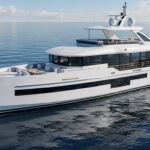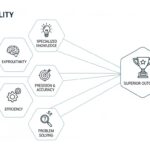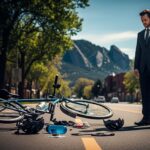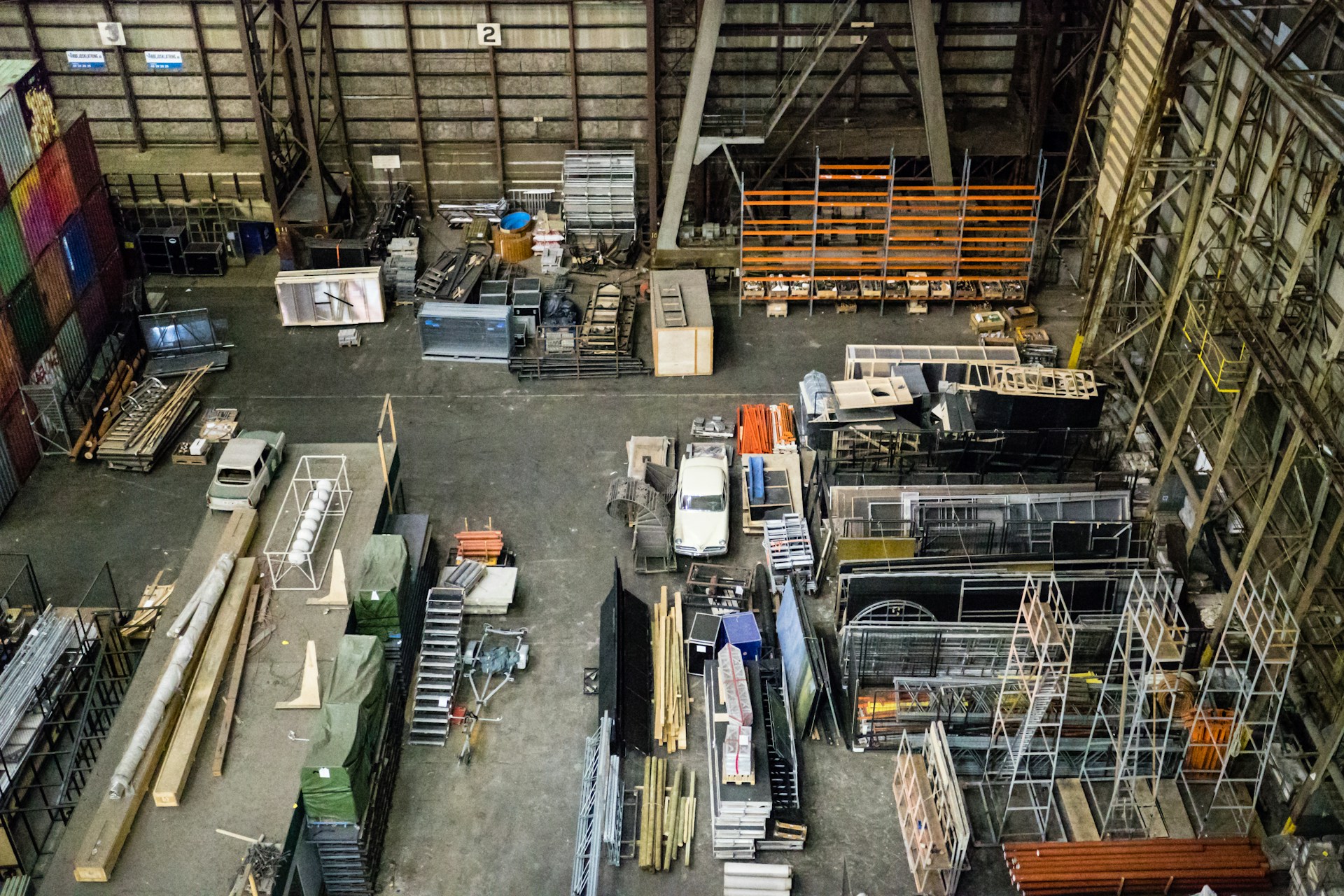Your work investigates the body as form, as sculpture, as living composition. The work seems to bring dance, yoga, and daily movement into the conversation. How and when did you start investigating these themes?
I initially started investigating these themes while in undergraduate school. I was studying psychology at the time at Wesleyan University. My background in dance, yoga and sports intersected with psychology and philosophy I was studying at the time and the art practices I was beginning to experiment with.
I directed and performed in a final performance piece in a public hallway that led to our cafeteria area. We each wore headphones, listening to our own music while gently dancing in one place. Some people didn’t dance, and just stood there with headphones in their ears. Thus, we performed an inward experience as a means to represent this personal relationship we have with ourselves. The bodies didn’t do much, just stand there, maybe swaying slightly. The bodies were there as stand-ins, sculptures to represent this idea.
In an enclosed mirror area in front of us I placed two old television sets, one on the left side and one on the right that picked up our images and played them back. And so we stood there watching ourselves. The goal was to demonstrate this inward experience one has – this surveillance of oneself by oneself. There was a Buddhist poem that I placed adjacent to the work that was about a Buddhist monk who walked to the top of a hill and met himself at the top.
That’s where it all began. And then in graduate art school (I was initially accepted for painting) I read “Essays on the Blurring of Art and Life,” and contemplated my painting practice as performance and picked up where I had left off with performance, while integrating all that I know – painting, writing, poetry, photography, dance, yoga, psychology… etc. I was considering all these formalities – shape, line, color, movement, breath, meditation, Buddhism, the brain and the mind in my performances.
And then I read Peggy Phalen, “Unmarked: The Politics of Performance,” and she declares, “Performance’s only life is in the present. Performance cannot be saved, recorded, documented, or otherwise participate in the circulation of representations of representations: once it does so, it becomes something other than performance.”
That statement directed me to begin thinking heavily about performance as presence, and what the meaning of “presence,” was. I am a yoga instructor and so read this idea as connecting to Buddhism, and as relating heavily to meditation and the Now. And so this is where my real investigation began.
The biggest component is how I understand time differently. For instance, today my family and I ventured to the Garden of The Gods in Colorado Springs, Colorado. We walked around, took photographs and then left. It was immensely beautiful. But there were certain constraints presented and some freedoms lost. We were sanctioned into each other’s schedules – my son was tired, my sisters were hungry… etc. The real life pressures of our schedules, of time, were omnipresent. As we walked, I considered these things and would have liked to strip myself from these conformities – walking on the path, step by step… I wanted to explore my body in that space – lay down, slowly stretch my arms out, take deep breaths, connect deeper to the land, to the rocks, rather than just be a momentary bystander. Looking back – maybe I should have – but the constraints of the moment lent to the normal tourist conformities of these natural wonders. My work aims to deconstruct these performative modes as a way to liberate and free the body and the mind from these constraints and behaviors. Thus, a softer sensitivity and heightened awareness to nature can reveal itself.
The act of simply walking and seeing, to me, is not enough — it misses too much information and we receive only a little information in a short amount of time. Through this somatic movement exploration more information can be attained rather than a quick snapshot in the mind.
Thus, my work has opened a doorway into knowing the sorts of possibilities that are out there in ways we can connect to our environments in a non-conformist fashion. At art openings, I enjoy the conversation, but sometimes just want to get on the ground and begin crawling around and stretching my body. I am aware of the possibilities. I hold them sweetly in my heart with a twinkle in my eye as I continue conversing.
It’s like if you tripped on mushrooms or LSD, you become aware of the limitless possibilities of seeing, of color, of being… when you are taken back to “normal reality,” you are still aware. It opens your eyes and your mind to the magic; you know it is there, you’ve tapped into it.
To what degree do you score your work or plan it’s composition or is it purely improvisational?
Some of the work is planned, but most of it responds to a feeling in the moment, and that truth, that rawness of the body experiencing itself is what creates the piece. Thus, most of the work is improvisational in that sense. Some of it has closed choreography in that we begin in circle ritual meditating, and then the space opens into complete improvisation if that’s what you want to call it. To me it’s a bit different than improvisation though. Somehow for me, the word improvisation implies performance and implies playing for an audience or to an audience. The work has explored this in the past, but I think improvisation may even be too much of a performative word.
I have visions for pieces. Sometimes, as I am laying next to my son putting him to sleep, sometimes talking to a friend, sometimes driving… The vision usually isn’t extremely detailed oriented: 3 people, in different colors, moving with their bodies, by Mono Lake. That is the essentially the score. The movement that unfolds is guided but not necessarily planned. Most of the people I work with know what they are choosing to involve themselves in. I share my ideas with them in depth via writing or in person. A lot of it unfolds through conversation. There are elements I keep open – the way we move – and there are elements I will keep closed – the location, the performers, the photographer and cinematographer. A lot of it happens on the fly, in the moment – all of a sudden something will come to me. I trust this process and allow the unknown to slowly reveal itself when it is necessary (sometimes only 10 minutes before filming!)
The work serves primarily as a platform to heal. That is the main essence of the work, for myself and for others – to dive deep into their bodies and souls and expand their understanding of themselves, their past, their present, and their future. The body holds memories, and it is through connecting to certain areas of the body that we can connect to these memories and these ways of shaping ourselves. It is through this somatic movement exploration, where we perform our raw selves, as a way to transform, free ourselves, and expand our consciousness.
Is there a routine or way you prepare before a work, through mind and/or body?
In the beginning, when I first began to tap into this kind of somatic movement exploration, the performer friends that I would work with would rehearse as a way to play with these ideas, explore them and understand how to work through contact improvisational techniques. Always, beginning with a meditation. It began with a lot of “rehearsals,” in my studio space or even outdoors where we would just move, explore and play often without talking for many hours. This is where the idea of a “moving meditation” emerged.
I have been studying and teaching meditation, somatic work, yoga and breathing exercises extensively. These aspects all come into play in preparing before a work. I usually work with others and if I am not I still begin with at least a 5 – 10 minute guided meditation connecting the mind to body via breath and tracking. For instance, I will guide myself and/or the participants in explaining for them to drop into the body, into the breath, by following the inhale up the front of the body and down the back of the body. This is a breathing exercise I actually learned from a therapist I was seeing a while ago. It’s a psychological tool to ground the mind in the body. This will continue and then move into the felt sense – tracking in the body – feeling the bottom of the feet connected to the earth, the heel, the middle of the foot, the ball of the foot, the toes, and then slowly shifting the weight from the back of the foot to the front of the foot and noticing how this small movement affects the rest of the body – the knees, the hips, the belly, the shoulders, the head, the ears etc. These movement principles are based in the anatomy of the body, in science. They were shared with me in a workshop at Anna Halprin’s Tamalpa Institute in Marin and also somatic experiencing exercises I learned at Spirit Rock Meditation Center.
Referring to one of the previous questions “what is presence” – this is presence – a full embodiment. The mind is not lost in thought — it is right here in the body. Everything is right here, in the expansive Now.
It has become a much more important component of my work. Recently it was deliberated based on chakra colors as a means to work through specific chakras and embody the ideas based on the chakra color worn – for instance, yellow for the 3rd chakra the solar plexus, blue for the throat chakra, and purple for the 6th chakra, the third eye.The color is informed by the working concept of the piece. This is how it is chosen. I think about formal elements – contrast to the other bodies if there are other bodies in the piece, contrast to the environment and space, line shape, form… these are all aspects that I consider.Your performances seem to span from live acts in public spaces and galleries to destination based performance that are only shared through documentation. How do you think about the variations on performance work and is there a mode which you prefer?
It may have to do with where I am living at the time. When I was living in Mammoth Lakes, I brought trees back to San Francisco and used them as objects in a performance piece. There is a sort of trade agreement or transfer that occurs. I bring the resources back for a reason. In this case, the reason was for the participants to connect deeper to nature. And recently, now that I have been living in San Francisco, a city, I brought a couple of performers and friends to that region of the Eastern Sierras, Mammoth Lakes, to again connect deeper to nature. I brought them to a site to experience the site, and previously I brought remnants of the site back to the city to connect deeper towards what the remnants refer to. Nature is a key component. For instance I ask myself, what is the nature of a gallery space? What is it defined as? How can we as bodies deconstruct this meaning? How do we as bodies perform spaces? What is our intrinsic nature as a body, as a human? Thus, nature, the nature of being human is something I investigate in all spaces I perform in.I would say, that the destination based performances that are only shared through documentation are more effective for the body, for the human, in some ways.Though it depends on time. It’s the difference between doing a 2 day meditation workshop in the city and one away in nature. You’ll receive the same health and psychological benefits, but the one that is removed from the city and your normal life may offer a different perspective on your daily life. You will awaken either way, but one may just be a bit deeper.
Though, I can’t say I prefer one over the other. They are both wildly effective and healing for the participant/performer involved.
You sent some questions you’ve been asking yourself; one being: How can we understand and reconnect to our body in new formats? How have you been thinking about this question within your work and how do you hope we investigate this through the format which your work is explored through: photographs/ video?
This is one of the main questions I am concerned with. I have a 5 year old son. He helps demonstrate the conformist manners in which we, adults, hold our bodies, present our bodies, and perform our bodies. Gesture is important to note here. We have created a language for the civilized, socialized, and modernized human. This is obvious in some ways, but often people forget it. How we sit, how we behave, how we talk, how we move our hands, how we don’t move our hands… etc.
A child, a free child, waves their hands emphatically, jumps up and down, lays on the floor at the airport. The child understands, and is connected to their body in an unrestricted manner. This is what I mean by “how can we understand and reconnect to our body in new formats?” How can we release the conformities, the uptight, socially acceptable ways to move and explore as an adult with the body in time and space. How can we be freed from these constraints. In school, tracking in the body is not taught – I did not learn about this until recently – this is a new way to connect to the body, by simply feeling your feet on the ground. It’s quite simple, but our society is slowly learning to embody these things, and most of our American society does not know about simple breathing techniques or tracking techniques to ground the mind in the body.
When referring to the photographs and videos, the audience can explore these ideas by watching and reading the concept descriptions, which will share these theories and ideas. It may be difficult for the audience to experience, but the overall idea is hopefully grasped through understanding an unrestricted free body.My work is moving towards integrating more audience members and participants into the work. The goal is to open this experience up for all, and so, this will ultimately be the way for the audience to explore these ideas – through experiencing them. I’ve realized that the pieces are no longer about me. I want them to be about you, I want the audience to become the performance, to experience what we as performers have experienced through this work, through this somatic movement exploration. I want to remove the division in performance and audience. You can call it social art or what have you; I see it more as “experiences.”
You often collaborate, both in your art practice and as a curator and organizer of other artists. Can you tell us about how these aspects may inform each other?
My goal is to help a community of individuals – to help others heal. As a curator and organizer I see myself in some ways as a therapist, as a guide, as a medium, as a person that will create a platform for other artists to express their own ideas. This is therapeutic in the way that it is transformational.
When something is shown to the public, it shifts. The work and the idea allocates a new and different perspective. It is given a voice; it is seen and heard. I strive to be a catalyst for this exchange. This is my goal – to be a medium for experience and transformation. This occurs when I collaborate with artists in my own pieces and practice, and occurs as a curator and organizer. I am invested in creating relationships around these main intentions and concerns.
While there is obvious similarities between your performance pieces, what sets them apart from each other outside of the changing landscape?
Many of my most recent performance pieces embody the same working concept. However, a difference from my previous work to what I am currently working on is most likely idea or concept. Of course though, I had to work through the initial pieces in order to arrive at where I am now in my work.
The main concern in most of my work is the body, the body as a site, the body as a home. This emphasis in the body seems to be one of the biggest currents that runs through most of my work, and maybe something also about abstracting the body in space.
Location, whether inside a gallery space, or by the Tufa at Mono Lake, dictates movement. Locations define performance. A gallery space of course defines certain kinds of bodily and performative gestures, but for instance, a railing will inform a body to behave differently. The body may explore leaning over the railing. The manmade creation of a railing informs the body’s placement. This movement may be different in nature perhaps.
Maybe the body finds a rock and leans over the rock. The shape of the body will differ if these are compared. In a gallery space, the body designs itself to these architectural implants. A corner of a room may mold the body in a certain way, whereas in nature, a lake or a bird flying overhead, or the wind because it is cold may inform the body differently.
Where is this most recent work leading you?
Most recently, I led a piece called the “Deconstruction and Reconstruction of the body in Space,” at ProArts in Oakland, California. The performance was not about me, it was about the audience, it was about the participants. I guided participants in somatically exploring the gallery as a space to investigate and as a stage. The audience becomes the performance. What does it mean to perform this body? How do spaces inform our bodily performance? How can we deconstruct the way we perform our bodies in designated spaces? How can we connect deeper to ourselves?
This piece was beautifully successful. The piece was followed by a talk where I spoke about the exercises explored with the participants referencing aspects of somatic psychology, Buddhism, and mindfulness. The talk closed with an open discussion and conversation about each participant’s experience and thoughts. From what it seemed, the participants all received something from this experience.
A key aspect of this performance was live sound played by my husband, Conrad Hack, in which he is essentially creating feedback loops using the sound of electricity. The sound that is created is wildly beautiful, intoxicating and meditative, similar to how a sound bath would make someone feel.
My goal is to do more of these kinds of pieces/experiences. I would like to lead more participatory performance pieces/experiences in galleries and daylong workshops and experiences in nature. My work is also guiding me into deepening my understanding of somatic psychology and healing.
What do you have coming up?
I’ll be leading another experience like the one previously mentioned at ProArts Gallery, at a yoga studio in San Francisco, California, called “Glow Yoga & Wellness.” I’ll also be working with another artist on The Block Project as part of “Nowhere Room” that responds to a found Styrofoam block in the Presidio of San Francisco.
Other than teaching yoga, teaching performance art to eighth graders, editing together the work that was explored at Mono Lake, looking for a place to show it, more applications for performance teaching jobs, the possible expansion of my family, scheduling another meet-up with the meet-up group I recently created called “San Francisco Consciousness Club,” and painting more.










